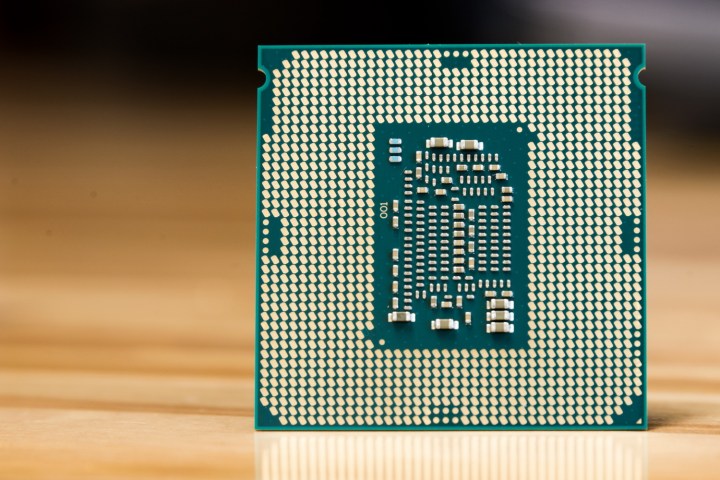
Just for kicks, here are all leaked eighth-generation Intel processors we know about thus far:
| Cores/ Threads |
Base Speed |
Single Core Turbo |
Two Core Turbo |
Four Core Turbo |
Six Core Turbo |
Power Draw |
|
| i7-8700K | 6 / 12 | 3.7GHz | 4.7GHz | 4.6GHz | 4.4GHz | 4.3GHz | 95 watts |
| i7-8700 | 6 / 12 | 3.2GHz | 4.6GHz | 4.5GHz | 4.3GHz | 4.3GHz | 65 watts |
| i5-8600K | 6 / 6 | 3.6GHz | 4.3GHz | 4.2GHz | 4.2GHz | 4.1GHz | 95 watts |
| i5-8600 | 6 / 6 | 2.8GHz | 4.0GHz | 3.9GHz | 3.9GHz | 3.8GHz | 65 watts |
| i3-8350K | 4 / 4 | 4.0GHz | N/A | N/A | N/A | N/A | 91 watts |
| i3-8300 | 4 / 4 | 4.0GHz | N/A | N/A | N/A | N/A | 65 watts |
| i3-8100 | 4 / 4 | 3.6GHz | N/A | N/A | N/A | N/A | 65 watts |
According to the new information, the Core i3-8350K model will be unlocked for overclocking, which separates the chip from the Core i3-8300 version and thus requires additional power. Both chips have 8MB of shared L3 cache while the Core i3-8100 model only has 6MB of shared L3 cache. But all three Core i3 models support dual-channel DDR4 memory clocked up to 2,400MHz while the Core i3-8350K model has added support for overclocked modules.
As for integrated graphics, the component is listed as “3E91H,” and is overclockable on the Core i3-8350K chip. It will have a base speed of 350MHz and a maximum speed of 1,150MHz. Meanwhile, the Core i3-8100’s integrated graphics will have the same base speed but a slower boost speed at 1,100MHz.
All eighth-generation Coffee Lake processors will use the LGA 1151 motherboard “seat,” or socket. This is the same socket used by Intel’s current seventh-generation “Kaby Lake” processors and its sixth-generation “Skylake” processors. The number in the socket name refers to the number of physical contacts on the belly of Intel’s processors, meaning the overall package has not really changed for its mainstream desktop processors for a few years.
The processors listed above would fall under Intel’s “Coffee Lake-S” codename, which refers to its eighth-generation mainstream performance desktop processor products. Typically, Intel uses an “H” for high-powered laptop processors that require high-performance graphics. The other processor groups consist of the “U” chips for ultra-low power thin and light notebooks, and the “Y” chips serving extreme low-power tablets and 2-in-1 detachables. Let us not forget the high-dollar “X” gang for the enthusiast PC gaming crowd.
Intel’s eighth-generation Coffee Lake processors will be joined by its new 300 Series chipset for motherboards. Thus, despite motherboards providing the same socket, system builders may end up swapping out the motherboard for a new model if Intel does not release firmware to make the 300 Series chipset compatible with seventh-generation Kaby Lake processors. That is what Intel did to make its seventh-generation processors compatible with its older sixth-generation 100 Series chipsets in September 2016.
Intel’s”Coffee Lake-S desktop processors are expected to be officially revealed on August 21.


